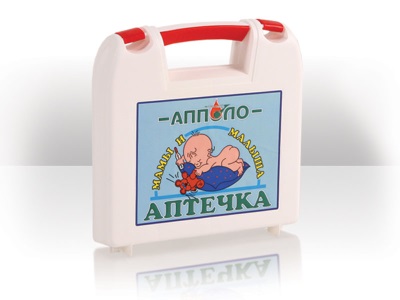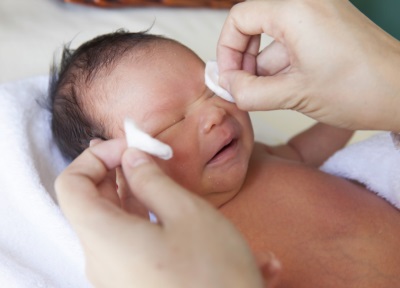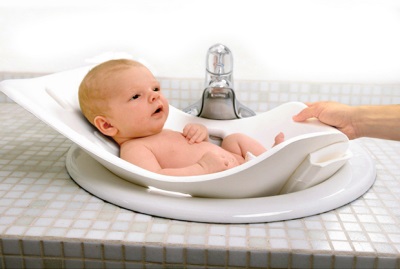First Aid Kit for Newborn: List of Required
In preparation for childbirth, the expectant mother usually makes lists of important purchases. One of the points about which you can not forget while waiting for a newborn is a first aid kit. Its contents will help the crumbs in case of illness and will save parents from having to run for medicines or other necessary medical items at night.
First Aid Kit at the maternity hospital
In a convenient plastic container or cosmetic bag, fold everything you need in the first days of your baby's life (if these funds are not offered in the maternity hospital after the baby is born):
- Baby cream.
- Powder.
- Wet wipes.
- Cotton pads.
- Bepanten. This tool does well with diaper rash on the baby’s skin, and with mom’s nipple cracks.
- Cotton swabs, pipette, brilliant green and peroxide for the treatment of the navel.
First aid kit after childbirth
First aid kit
Now there are ready-made first-aid kits for children on pharmacy chains, but they may not have the necessary items or drugs for your child, and some funds will be superfluous. It is more preferable to write a list of everything you need to maintain the health of the child after childbirth.
A ready-made first-aid kit should be purchased in situations where hygiene products and medicines are urgently needed, for example, childbirth began prematurely, and the future mother had not yet had time to prepare the first-aid kit to the hospital.
How caring mothers form their first-aid kits for a newborn baby, see the next tataniolla channel video.
Hygiene Products
In the house where he lives newborn, Must have:
- A means for swimming. A special choice would be a special baby soap in a package with dispenser.
- Cream for the treatment of folds.
- Powder. Preferably without any aromatic additives. It is applied to the skin of the baby before wearing a diaper, while it is not used with baby cream.
- Oil for massage, approved for use in newborns.
- Cotton buds for the treatment of the navel. Also purchase chopsticks with a limiter that can wipe your ear.
- Non-sterile cotton wool for the manufacture of flagella, which handle the nose and ears.
- Wet wipes for children.
- Cotton pads.
- Vaseline oil, which can be processed crust on the head and lubricate the tip of an enema or thermometer before the introduction into the rectum.
- Special scissors.
- Aspirator, the function of which is to suck the contents of the spout of the baby.
- Thermometer for the bath. It will help to measure the temperature of the water before bathing.
- Medicinal herbs that are brewed and added to the bath. The most common is chamomile, succession and motherwort.
Means and items that will be needed in case of illness
- Thermometer to measure baby’s body temperature. Choosing a suitable thermometer, please note that it is much more convenient to measure electronically, and mercury indicators are more accurate.
- 25 ml syringe for enema.
- Vapor tube.
- Pipettes with a rounded tip that are stored in a case. They are used to administer a medicinal solution to the nose or ears of an infant.
- Dosing spoon for drugs. It can be replaced with a special syringe with divisions.
- Packing sterile cotton and sterile bandage.
- Gauze or disposable mask.
- Measuring cup.
Antiseptics
Means of this group are needed for the treatment of the navel in the first month of life, as well as for disinfecting the baby’s skin when wounds appear.
Be sure to buy a baby first aid kit and keep at home:
- Hydrogen peroxide.
- Medical alcohol.
- Brilliant green solution.
- Chlorophyllipt solution.
- Potassium permanganate to be added to the bath to a light pink color.
- Iodine solution.
- Furacilin tablets for solution, which washed the eyes or genitals of the child.
- Bactericidal patches.
How to care for the navel of a newborn with green and hydrogen peroxide, see the video of Dr. Konstantin Zelensky.
Medicines
In the treatment of newborns and the prevention of diseases in childhood use these medications:
- Antipyretic drugs. It is desirable that the house had two forms of such drugs - and candles, and syrup.
- Means against dysbiosis, for example, bifiform baby bifidumbacterin, lactomun and others.
- The sorbents given by the baby in case of poisoning are often activated carbon or smect.
- Remedies for diaper rash - bepanthen or sudokrem.
- Anesthetic Gum treatment gel, for example, kamistad or dentol.
- Vitamins - most often at the age of up to one year vitamin D is used in the form of an aqueous solution.
- Sprays and nasal solutions based on seawater, such as aquamaris or humer.
- Funds from conjunctivitis, for example, albumin.
- Remedies for colic - espumizan, planteks, bobotik, bebinos and others.
- Antihistamines, for example, zodiac or fenistil.

Watch the video of Larisa Sviridova - a specialist in preparing future parents for the birth of babies. In it, Larisa talks about what means you definitely need for a newborn baby.
Storage of the first-aid kit
Having bought all the necessary components and putting them together, you should attend to the issue of storing a first-aid kit for the baby.
- Dividing all the items in the first-aid kit into 2 parts, fold them into 2 separate boxes. In the first box, let there be items for everyday use, so it should be kept close at hand. In the second box, put all the items that you may need for diseases. It should be kept in a dry, dark place, separately from adult medication.
- Check if your medicine cabinet contains drugs that are important to store under certain conditions. For example, antipyretic candles should be kept in the refrigerator.
- Do not throw away the drug packaging and instructions to them, at any time to check the expiration date and dosage.
- Review the medicines in the children's first-aid kit every 3 months and throw out the expired funds in time to buy new ones.
- Write down the emergency phone numbers on the leaflet and put this leaflet in the medicine chest.











